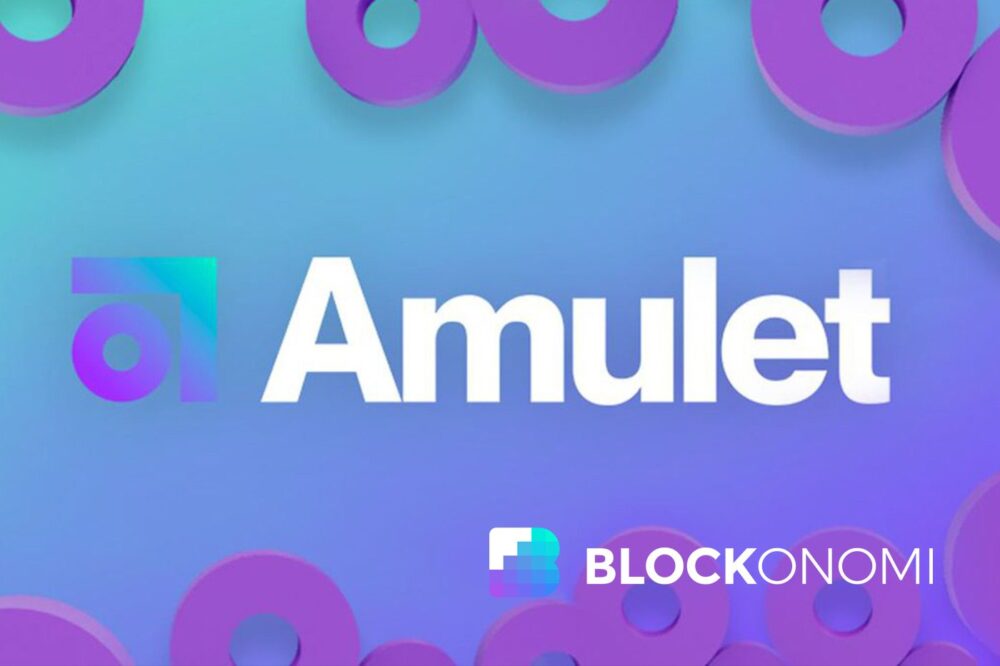
If there is one name that everyone should be keeping an eye on, it’s Amulet. This is because they launched on the mainnet on 29th September.
The testnet was successful and Amulet has also received its audit report with positive feedback in addition to the team launching the AmuNation (the name of the Amulet community) application and gamified bounty in August.
There was also a launch party at token 2049 in Singapore to mark the beginning of this incredible journey.
What is Amulet?
Before going any further, it is firstly important to fully comprehend what Amulet is and does. Essentially, Amulet is a Rust-based ecosystem risk protection protocol that was initially implemented on Solana (SOL).
All Web3 financial product users benefit from decentralized risk protection protocols, which options can include oracle failures, stablecoin depeg risk, smart contract risk, slashing risk, and various other economic exploits.
Smart contract exploits pose a particularly high risk, with over $3 billion lost to smart contract hacks last year. Amulet protects users and developers from these highly common decentralized finance-related risk types, along with NFT and metaverse-related offerings, which enables them to participate in the burgeoning Web3 sector in a safer way.
Amulet is committed to providing simple and dependable Web3 coverage with full protection and yield that is also properly protected by Protocol Controlled Reserves (PCR).
In reality, less than 5% of the digital assets in this industry are safe. As a result, Amulet Protocol adds security to digital assets via a range of options like smart contract vulnerability, stablecoin depeg and, in the future, NFT cover possibilities.
Why is Amulet important?
Presently, risk management solutions on Solana as well as in Rust-based ecosystems, generally speaking, are quite scarce if not non-existent. This provides Amulet with a truly rare market opportunity as the team is constantly working hard to create the risk management industry’s first PCR (Protocol Controlled Reserves) approach, which is a big difference from the previous infrastructure of renting underwriting capital.
Furthermore, Amulet allows users to stake both easily and seamlessly. Amulet Protocol has three layers of protection for claims and assets so staking is not only exceedingly simple, but also very secure.
Amulet Protocol is founded on the creative application of cutting-edge technology that is both current and relevant. So, in situations such as a stablecoin depegging trigger leading to payouts, the hybrid claims management will see complete automation, with the DAO model of Amulet Protocol managing claim payouts.
What has Amulet done to impress so far?
Naturally, any viable project in this industry needs to prove that it has already achieved several milestones. In Amulet’s case, it has a strong and active community that has grown to 25,000 people and counting.
The AmuNation community was also the driving force behind the testnet’s success. In addition, Amulet’s unique cover model, the audit review, the announcement of being the first cover protocol on Solana, and $6 million being generated via seed funding led by Gumi Cryptos Capital are among the growing list of accomplishments, thereby showcasing what Amulet is all about and why it is receiving plenty of mainstream attention and interest.
Regarding future objectives, the team shall concentrate on launching then becoming multi-chain, with the goal of becoming the biggest cover protocol in all of Web3 by this time in 2023. The full plan is available on the official roadmap which can be viewed at any time. Needless to say, Amulet has and continues to impress the DeFi community and the mainnet launched on September 29th.
Be sure to check out the official website and the Twitter, Discord and Telegram channels for more information.
- Bitcoin
- blockchain
- blockchain compliance
- blockchain conference
- Blockonomi
- coinbase
- coingenius
- Consensus
- crypto conference
- crypto mining
- cryptocurrency
- decentralized
- DeFi
- Digital Assets
- ethereum
- Guides
- machine learning
- non fungible token
- plato
- plato ai
- Plato Data Intelligence
- Platoblockchain
- PlatoData
- platogaming
- Polygon
- proof of stake
- W3
- zephyrnet













